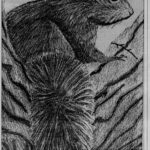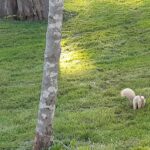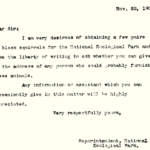Location: Summerhill, Queen’s University
Eastern Grey Squirrels are the most common tree squirrel in North America and are one of Kingston’s most visible animals. They cavort through the parks and use the city’s telephone cables as highway systems.[1] Squirrels are regularly seen collecting and burying nuts, but also battling with crows over goodies from park garbage bins. Not too long ago the humans of Kingston hunted and ate squirrels. Take for example “The Grand Squirrel Hunt” in Gananoque in 1840 where squirrels together with crows and black birds were hunted, killed and eaten as part of a supposedly “scrumptious dinner.”
But you might be surprised to learn that the blackness of some of Kingston’s squirrels is rather unique – so much so that in the early 1900s people like Frank Baker (the superintendent for the National Zoo in the United States) tried to obtain some of these animals from Canada. He wrote letters to people in Toronto, Ottawa, Windsor, London, and Wolfe Island asking to get black squirrels.[2] What Baker might not have known is that Ontario’s black squirrels are actually Eastern Grey Squirrels with a pigment mutation called melanism. Some researchers believe this adaptation is due to inter-breeding with Fox Squirrels[3] while others think it evolved because it gives these squirrels a thermal advantage in colder climates (like Ontario).[4] Nonetheless, Baker acquired eight black squirrels in 1902 from Rondeau Provincial Park in Chatham-Kent and they quickly became something of a national sensation in the United States.[5] A few years later, in 1906, 18 black squirrels were released from the zoo and today Washington DC is home to a robust black squirrel population (accounting for almost half of the squirrels in the city).
While black squirrels are ubiquitous in Kingston there is a squirrel of another colour that has captured the hearts and hopes of many Queen’s University students, the “Golden Squirrel.” “The Golden Squirrel” likely refers to a family of albino or leucistic squirrels[6] who are often spotted in and around City Park, particularly here near Summerhill. These light squirrels are also Eastern Grey Squirrels and are even more rare than their black counterparts.[7] While black squirrels have a great deal of melanin pale squirrels have very little and their white colour can make them easy targets for birds of prey. It is because they are so rare that golden squirrels serve as something of a talisman for Queen’s University students. They believe if you see the Golden Squirrel before mid-terms you are likely to fail but if you see them afterwards you will ace your finals. Have a look around, can you spot any of Kington’s black, grey or golden squirrels?
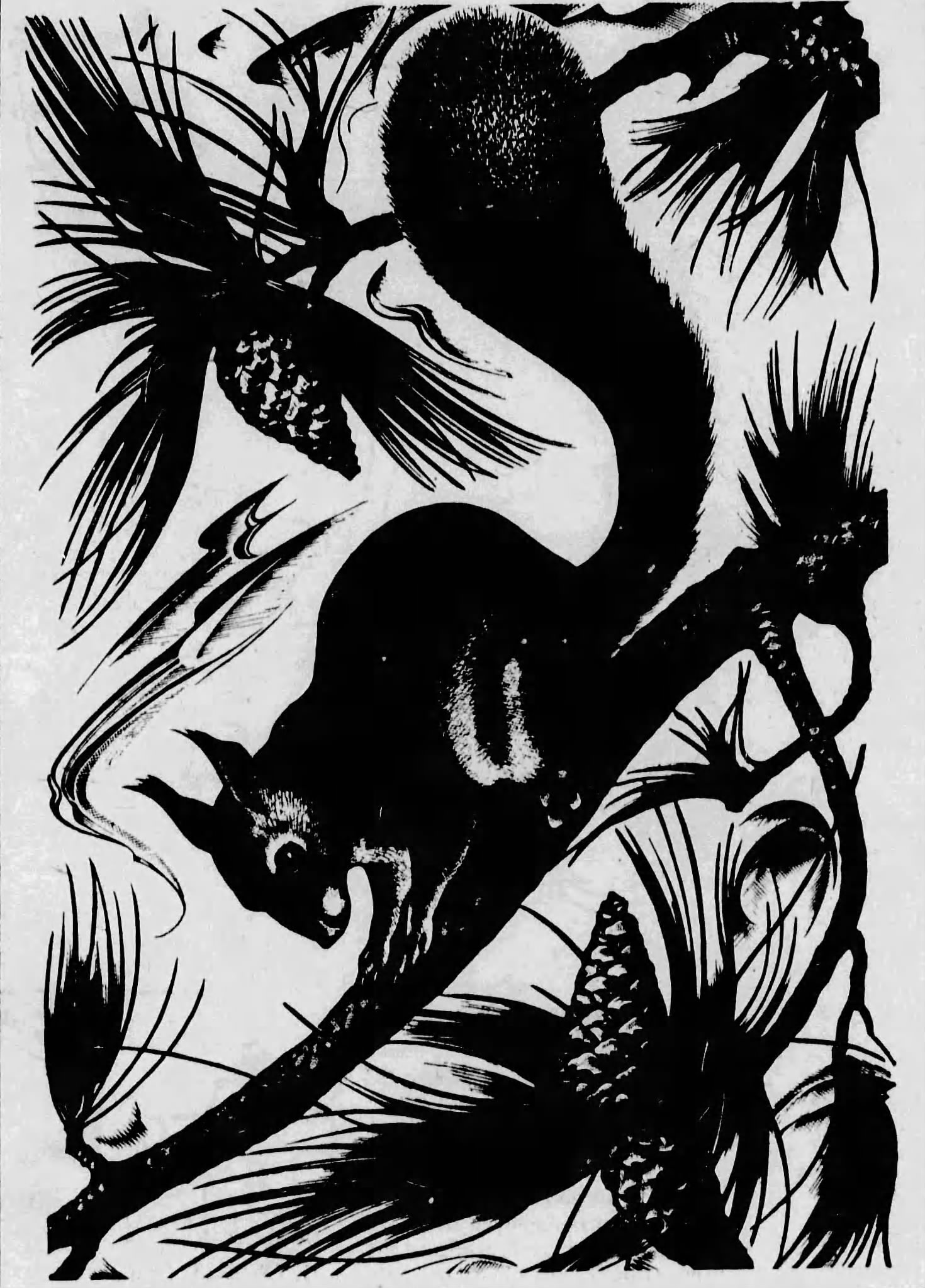
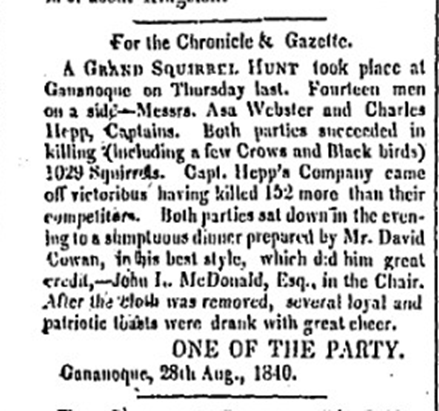
Notes and Credits:
Footnotes:
- [1] Despite this clever strategy squirrels are one of the primary victims of car-centric urban planning (along with turtles, free-roaming cats and other animals).
- [2] Kwong, M., 2018. “White House, black squirrels: How 8 ‘desirous’ Canadian rodents ended up overrunning Washington.” Available from the CBC.
- [3] Eastern Grey Squirrels are the largest tree squirrels in Canada and are predominantly a nut eating species. They are incredibly quick and can run up to 25kms/h on the ground (See Hinterland Who’s Who)
- [4] Floyd, C., 2019. “How the black squirrel’s coat gives it an edge in Canada.” The Weather Network.
- [5] Ontario received some grey squirrels from the United States in exchange. Kwong, M., 2018. “White House, black squirrels: How 8 ‘desirous’ Canadian rodents ended up overrunning Washington.” CBC.
- [6] “There are two basic types of white squirrels: albino and leucistic. Albinos have pink or blue eyes and no dark pigments anywhere on their bodies. Squirrels that have white coats and dark eyes are called leucistic.” (Johnson, T.W., “Out My Backdoor: White Squirrels Up Close” Georgia Department of Natural Resources. See Georgia Wildlife.
- [7] Olney, a city in the United States, has the largest concentration of albino squirrels in the world – and they serve as the city’s mascot and logo too. They have even passed “special squirrel laws” to protect them. See BBC Earth, Albino squirrels in Olney.
Extras:
- Squirrels: The Animal Answer Guide by Richard W Thorington and Katie E Ferrell
- The Natural History of Canadian Mammals by Donna Naughton
- The Urbanization of the Eastern Gray Squirrel in the United States, a journal article by Etienne Benson
- United colours of the city: A review about urbanisation impact on animal colours, a journal article by Lucas Leveau
- Sneaky Squirrels Steal Acorns, a snapshot from a documentary by BBC Earth
- Backyard Squirrel Maze, a Youtube Video by Mark Rober
- Squirrels, Ahoy! A podcast episode by Stuff You Should Know
- How squirrels track their nuts, a podcast episode by Every Little Thing
- Uptown Squirrel, a podcast episode by 99% Invisible


